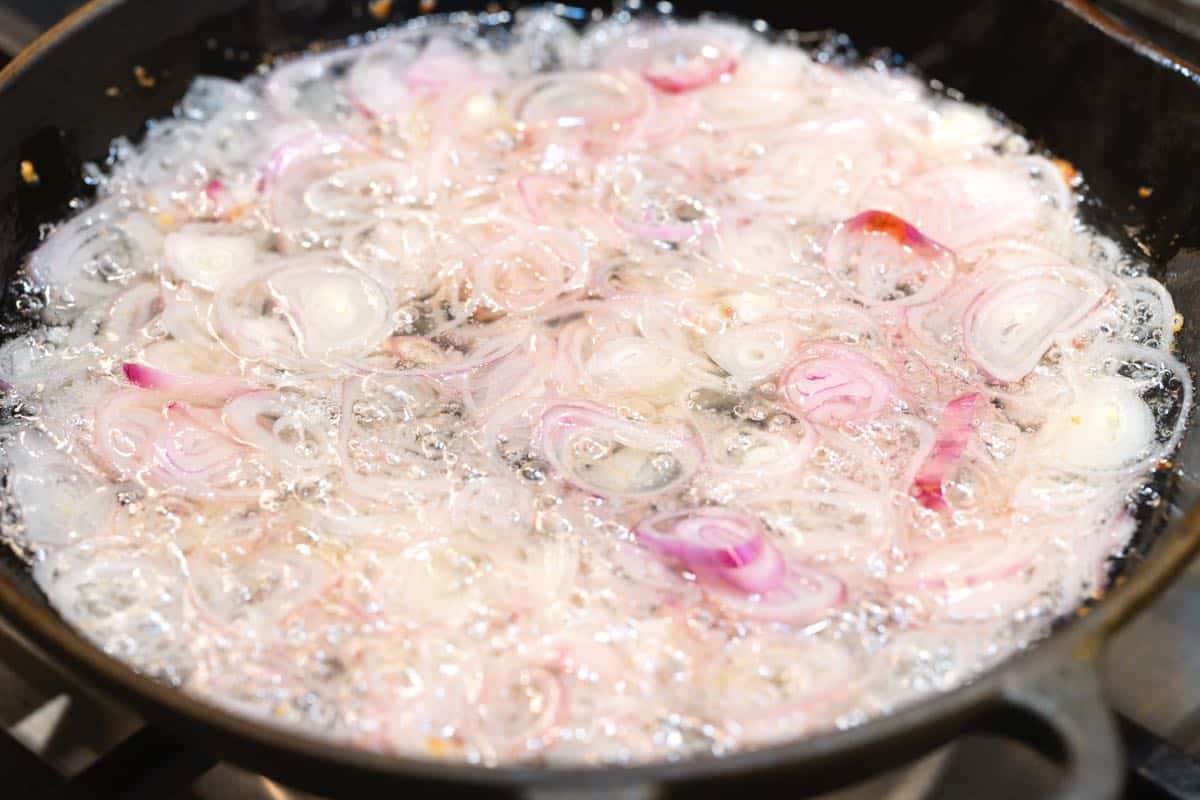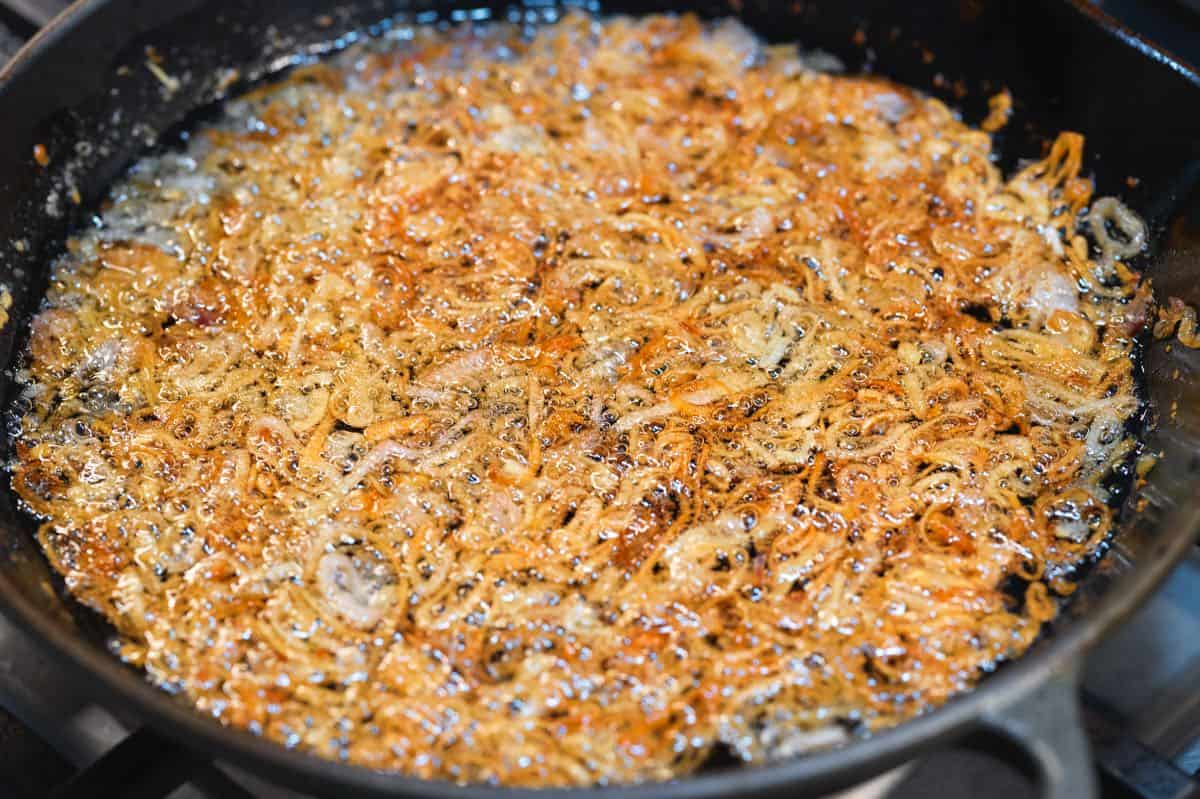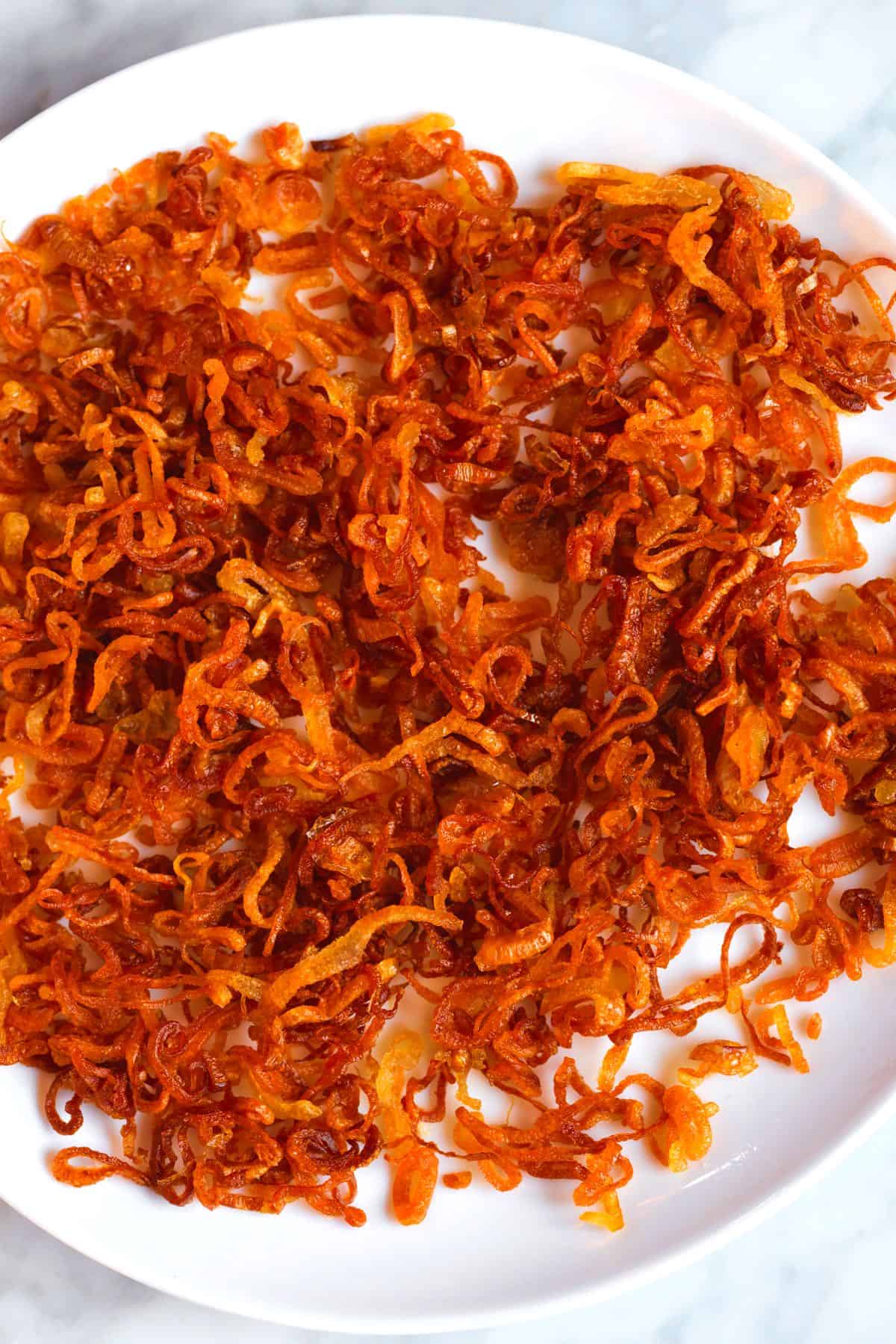This is our quick and easy recipe for fried shallots! They become crispy and delicious. Sprinkle them on salads, mashed potatoes, soups, and more!
You’ll be hooked once you try our fried shallots recipe. You can add them to almost any dish. I add them to holiday sides like green bean casserole, but they are also wonderful sprinkled over scrambled eggs, mashed potatoes, and salads like our green bean salad or potato salad.
Like fried garlic or fried onions, fried shallots are easy to make at home. We will be roasting our shallots, keeping this recipe as simple as possible. As a bonus, once it’s gone, the frying oil is great for homemade dressing because it picks up the flavor of the shallot. Homemade shallot oil to perfection!
Key Ingredients
- Shallots: I always buy more than I need. Roasted shallots keep for a week or more, so don’t be afraid to make more than you need. I cut them into small rings using a sharp knife or a mandoline cutter.
- Oil: I use neutral oils like safflower or avocado as they have a higher calorific value than olive oil. And remember, you can save the oil used to fry the shallots. It tastes amazing!
- Salt: This is optional but it makes the shallots taste incredible. I add a little to the right as the shallots come out of the oil.
How to Make Roasted Shallots
To make fried shallots, peel and cut them into small rings. Do this with a chef’s knife or use a mandoline cutter. Then, put them in a frying pan with a large amount of oil.

I like to think of frying shallots as a slow roast. We try to fry them a little in hot oil so that they are sweet and soft before they become golden and crunchy.


If the shallots are a shade or two of the color you want, use a slotted spoon and transfer them to drain on a paper towel-lined plate. Just like when you fry garlic, they continue to cook for a few seconds.
Ways to Use Roasted Shallots
If you’re like me, you’ll go through a good amount of your roasted shallots as popcorn (they’re so good!). With the shallots you have left over, here are some of my favorite ways to use them:


Shallots are easily fried
-
PREP
-
COOK
-
TOTAL
Crispy fried shallots can be added to almost any dish. Think salads, soups, stir-fries, casseroles, and more. If you are frying the shallots, allow them to cook a little in the oil before frying them to make them sweeter. They take about 10 minutes.
For more crispy fried shallots, slice your shallots thinly and evenly. Use a sharp chef’s knife or mandoline cutter.
Make 1 cup of fried shallots and 1 cup of shallot oil
You will need it
6 medium shallots, thinly sliced into 1/16-inch-thick rounds, coin size
1 ½ cups (355ml) safflower, avocado or vegetable oil
Good sea salt
Directions
1Heat oil in a deep pan over medium heat, then line a plate with paper towels.
2Test the hot oil by adding one shallot. If you see small bubbles around the shallot, the oil is ready. Add the shallots and cook slowly, stirring occasionally, until light brown and crispy, about 10 minutes. You fry it in a pan, but treat it like lightly frying shallots in oil – we want them to be slightly saturated in oil. If the shallots are browning at the 5 minute mark, reduce the heat.
3If the shade is lighter than you’d like, use a slotted spoon to remove the shallots from the oil and remove to a paper towel-lined plate to cool completely. As they cool, the shallots darken and become translucent. Add a little salt.
4Allow the oil to cool completely, strain, and store in an airtight container in a cool place for up to one month.
Tips from Adam and Joanne
- To save: Store roasted shallots in an airtight container at room temperature for about 1 week, maybe longer. Store and refrigerate the fried shallot oil in an airtight container for up to one month. It’s delicious! Use it for dressing, roast more shallots, or cook with it to add a shallot flavor to your dish.
- The facts below are estimates.
Food Per Serving
Serving Size
1/4 of the recipe
/
Calories
135
/
Perfect Oils
14g
/
Saturated Fats
1.6g
/
Cholesterol
0 mg
/
Sodium
79.3mg
/
Carbohydrate
2.5g
/
Dietary fiber
0.5g
/
Total Sugar
1.2g
/
Proteins
0.4g



